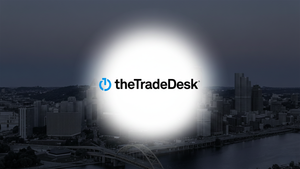U.S. Current-Account Deficit Widens to $450 Billion Amid Trade Imbalances and Energy Imports

The United States current-account deficit expanded sharply to $450 billion in the first half of 2025, marking a renewed widening of the country's financial shortfall with the rest of the world. This expansion reflects a persistent imbalance between what the nation imports and what it exports in goods, services, income, and financial transfers. The trend is raising questions about the sustainability of America's global financial position and the potential implications for currency stability, inflation, and foreign investment.
The current-account deficit, a closely watched metric of economic health, is primarily driven by an increase in imports of goods and services coupled with a modest rise in outbound investment income. In the first two quarters of 2025, a stronger dollar, resilient domestic demand, and softening export volumes contributed to the growing gap. The U.S. economy remains a magnet for foreign goods, while U.S. exports—particularly in industrial machinery, agriculture, and energy—have faced slower global demand.
Surge in Goods Imports Fuels the Deficit
A major component of the widening deficit came from a sharp uptick in the goods trade imbalance. Consumer demand for automobiles, semiconductors, pharmaceuticals, and electronics continued to outpace domestic supply, resulting in higher imports from countries including China, Germany, South Korea, and Japan.
Imports of electric vehicles and related battery technology from South Korean manufacturers such as Hyundai and LG Energy Solution (KRX:373220) surged as U.S. consumers embraced newer EV models at lower price points. Similarly, semiconductor imports rose sharply as domestic production still lags demand for advanced chips used in artificial intelligence and cloud infrastructure. Many of these chips continue to come from Taiwan Semiconductor Manufacturing Company (NYSE: TSM), a key supplier to global tech firms.
Additionally, a rebound in pharmaceutical imports from the European Union, including generic medications and specialty treatments, contributed to the deficit. German-based Bayer AG (OTC:BAYRY) and Swiss drugmaker Novartis (NYSE: NVS) remain among the top foreign suppliers of health products to the U.S.
Energy Imports Tick Up Despite Domestic Boom
Despite a domestic energy boom in Texas and the Gulf Coast, the U.S. saw an increase in crude oil and refined petroleum imports during the first half of the year. Temporary refinery maintenance shutdowns and a rise in energy consumption pushed up reliance on imported fuels. The U.S. imported larger quantities of oil from Canada, Mexico, and Saudi Arabia to meet seasonal demand.
Energy companies like ExxonMobil (NYSE: XOM) and Chevron (NYSE: CVX) faced logistical bottlenecks and seasonal constraints, prompting the government and private refiners to supplement domestic supply with foreign crude. As a result, the U.S. petroleum trade deficit widened, reversing some of the progress made during the domestic shale boom of the past decade.
Services Surplus Shrinks
While the U.S. typically runs a surplus in services trade—including travel, finance, and software exports—this margin narrowed in early 2025. International tourism and business travel rebounded globally, but a stronger dollar discouraged some inbound foreign spending while encouraging outbound travel by U.S. citizens.
In the technology sector, U.S. software and cloud services exports remained robust but faced mounting competition from European and Asian platforms. Foreign clients increasingly turned to regional providers with lower costs or more favorable regulatory frameworks, reducing demand for services from major American tech firms such as Microsoft (NASDAQ: MSFT) and Oracle (NYSE: ORCL).
Investment Income and Transfers
Offsetting part of the deficit was a modest increase in income from U.S. foreign direct investments. American multinationals earned solid profits from overseas operations in Asia and Europe, particularly in sectors such as finance, consumer goods, and industrials.
However, net unilateral transfers—such as foreign aid, remittances sent abroad, and pension payments—remained negative, adding to the current-account shortfall. These transfers are considered outflows that do not involve an exchange of goods or services, further widening the deficit figure.
Dollar Strength and Global Implications
The persistent current-account deficit, while long considered manageable due to the dollar's global reserve status, could increasingly put downward pressure on the greenback if foreign demand for U.S. assets weakens. So far, global appetite for Treasury securities and U.S. equities has held firm, but any erosion in investor confidence could trigger currency volatility.
The U.S. has historically relied on capital inflows to fund its current-account deficit. As long as foreign investors continue to view the U.S. as a safe haven, the deficit may not present an immediate crisis. However, policymakers and economists remain cautious about the long-term impact on trade competitiveness and monetary policy flexibility.
Outlook for H2 2025
With global trade tensions rising and interest rate policies diverging across economies, the outlook for the U.S. current account remains uncertain. A slowdown in domestic consumption or a rebound in U.S. exports could narrow the deficit, but structural factors—including reliance on imported goods and energy—suggest the imbalance may persist.
The second half of 2025 will likely see intensified focus on policy responses, including potential tariffs, energy infrastructure investment, and industrial reshoring incentives. However, such measures may take time to produce meaningful changes in trade dynamics.
Disclaimer: This article is for informational purposes only and does not constitute financial advice or a recommendation to buy or sell any securities mentioned. Always conduct your own research or consult with a licensed financial advisor before making investment decisions.
More News
View More




Recent Quotes
View More
Quotes delayed at least 20 minutes.
By accessing this page, you agree to the Privacy Policy and Terms Of Service.